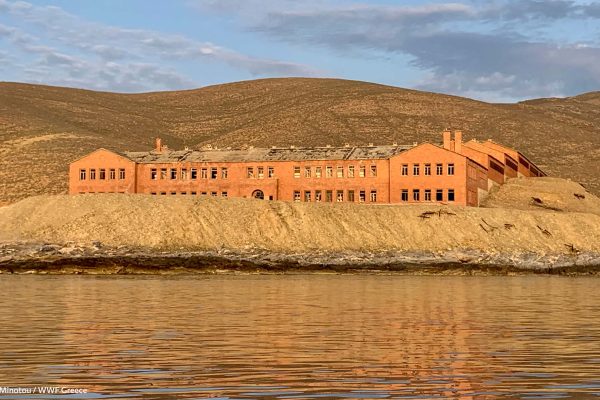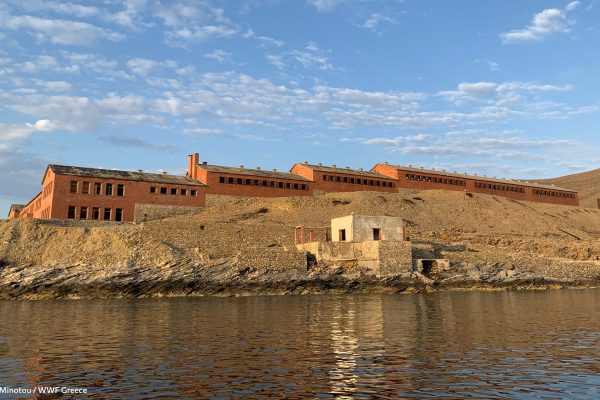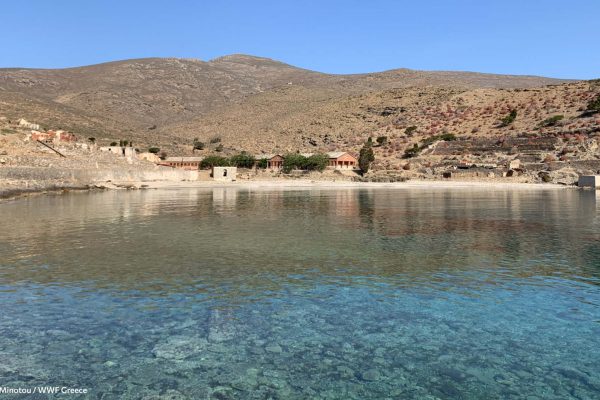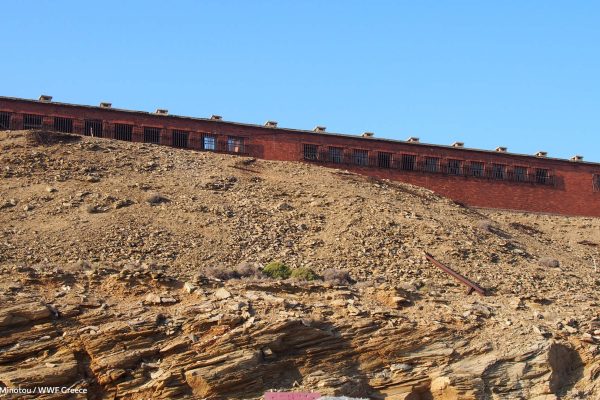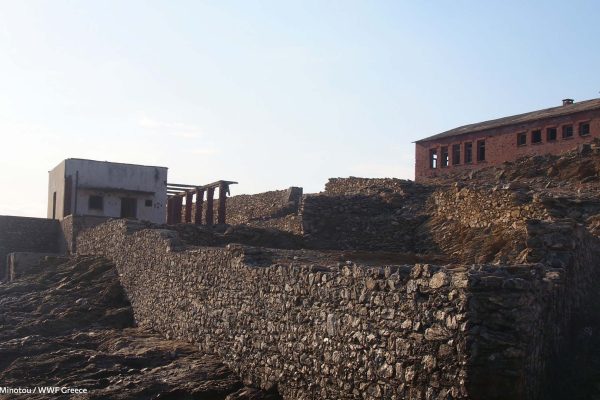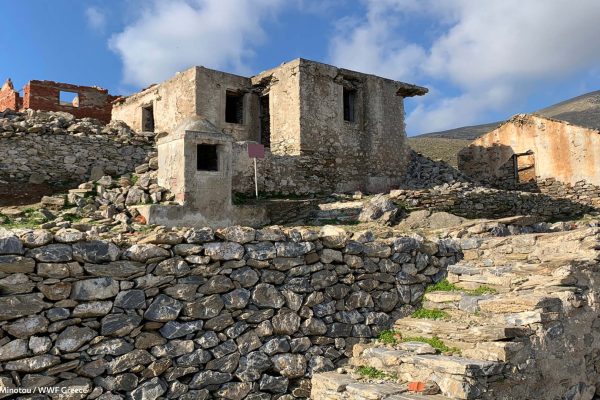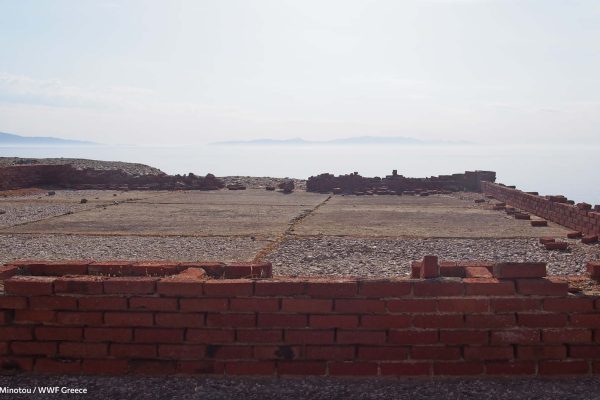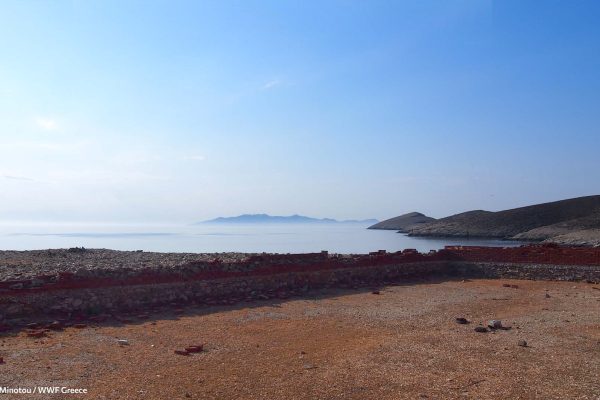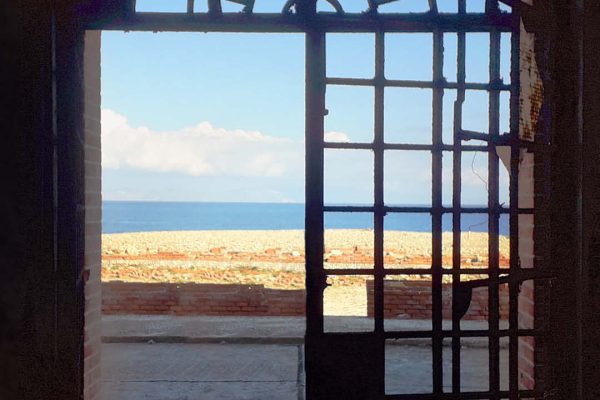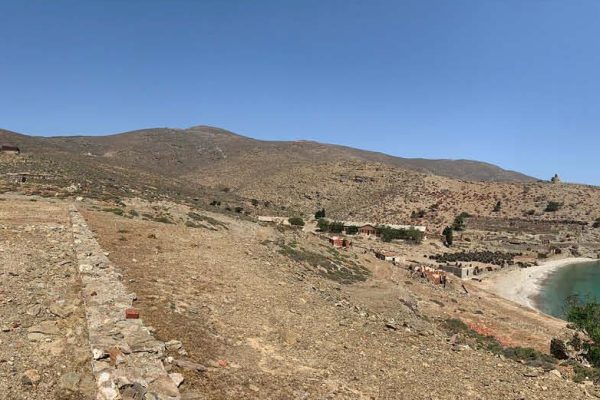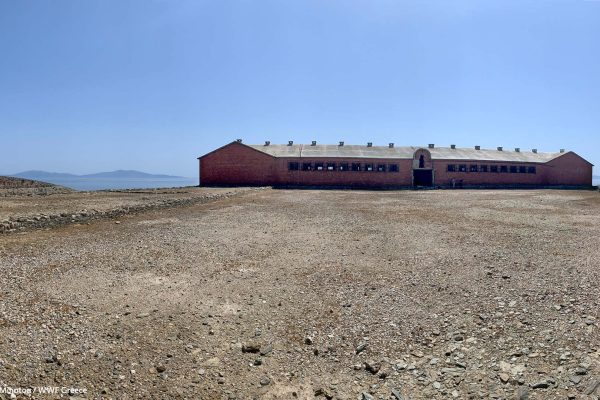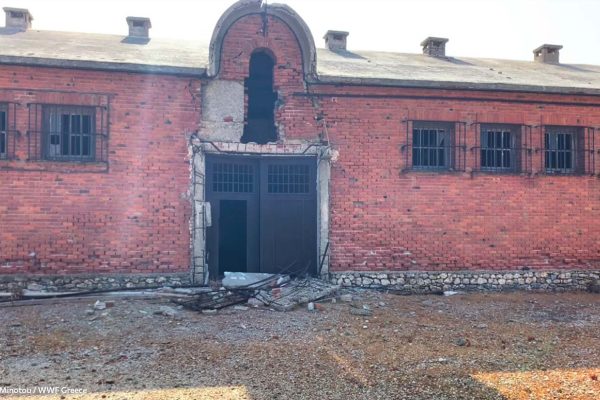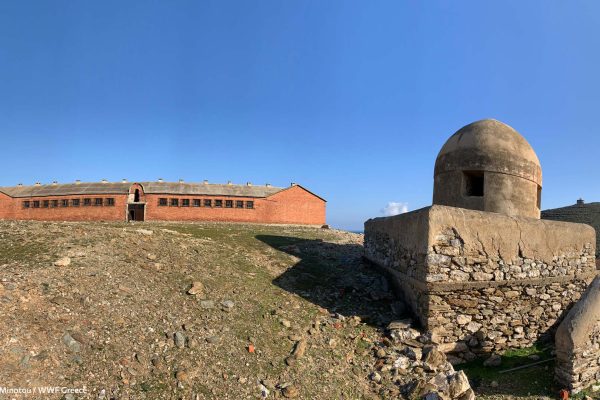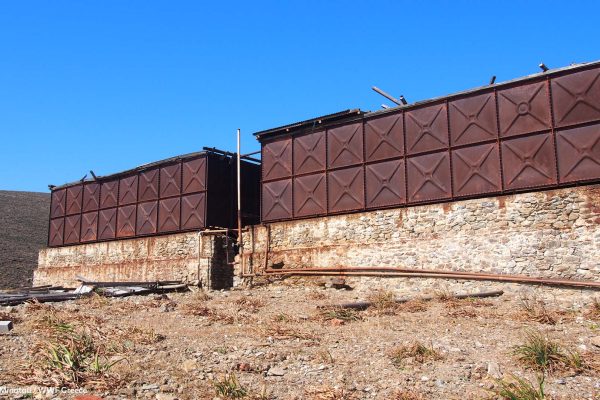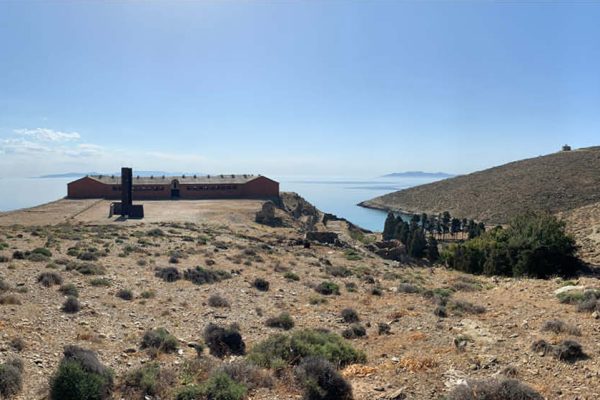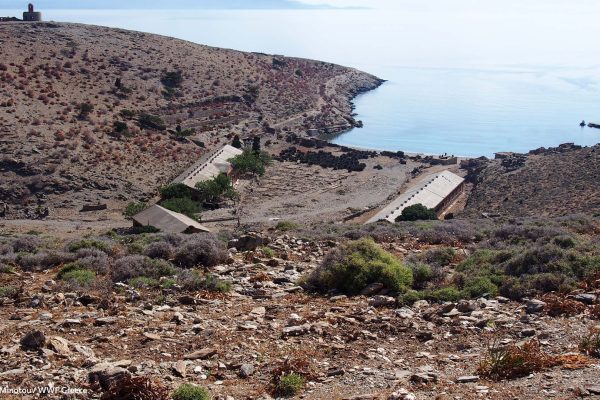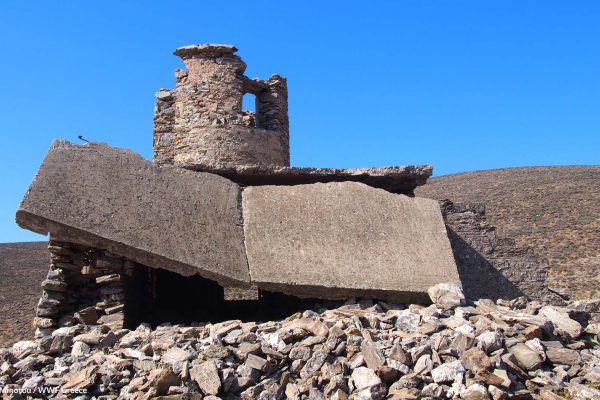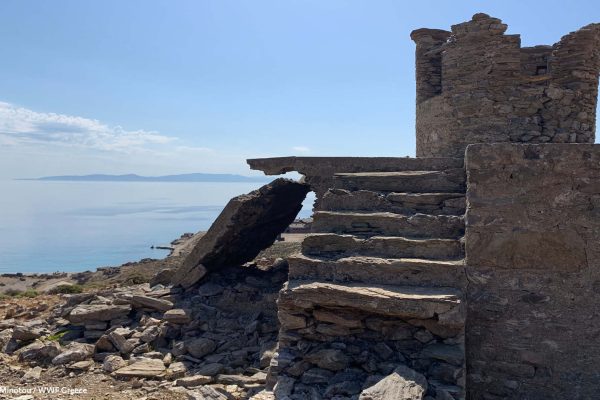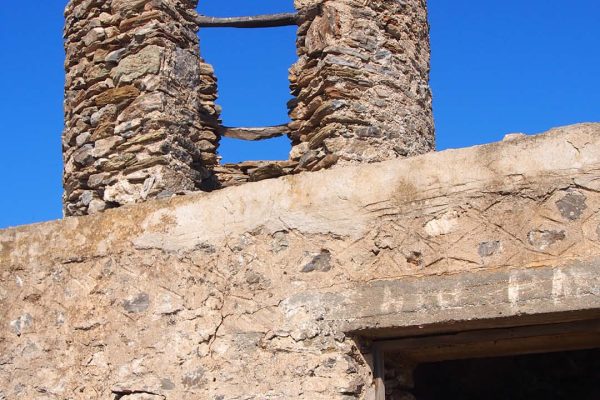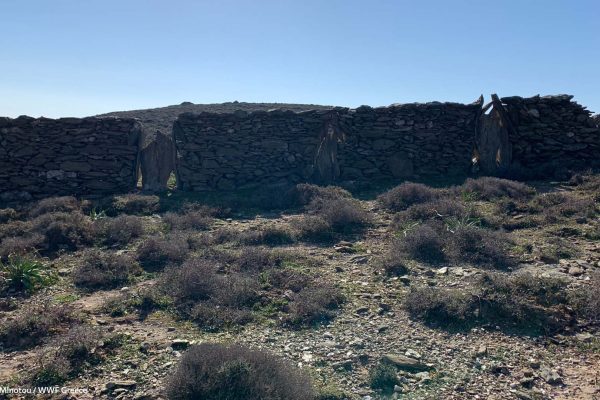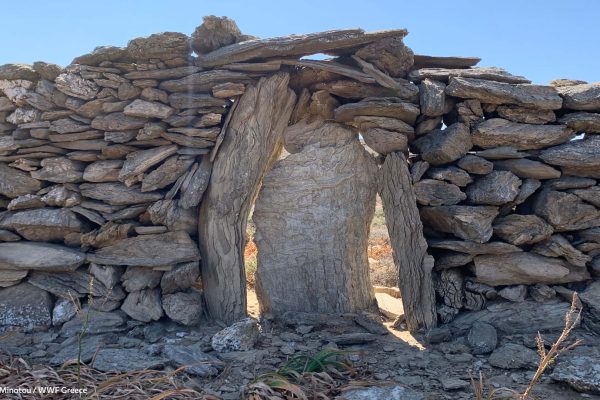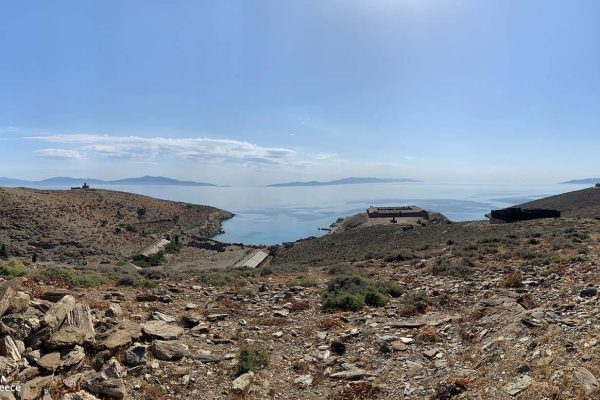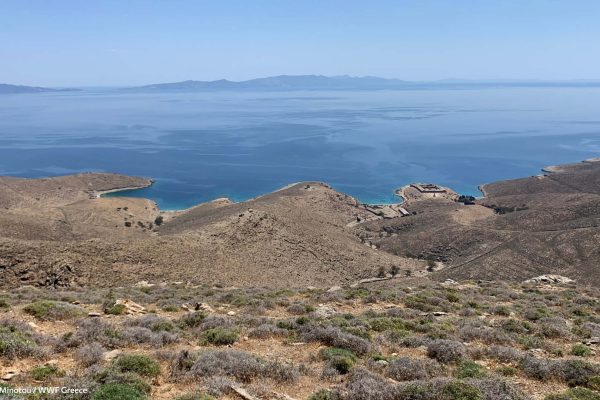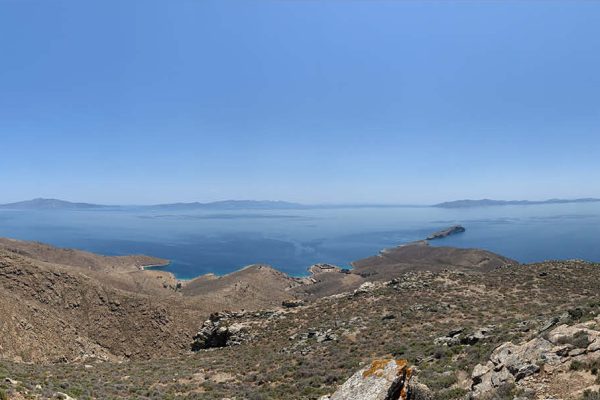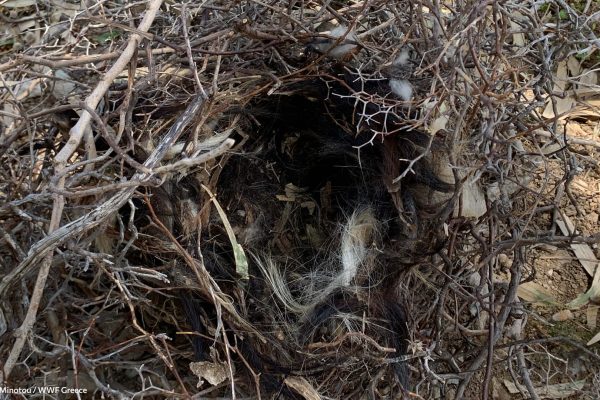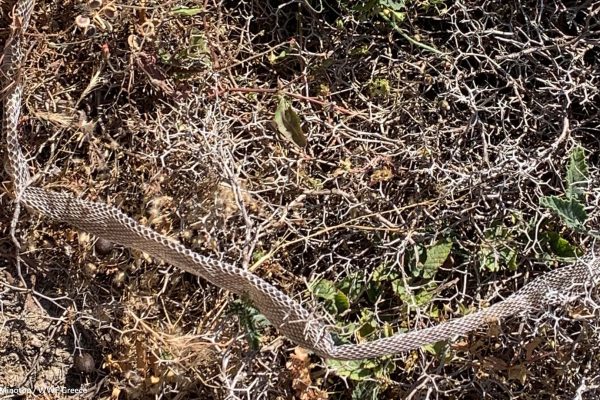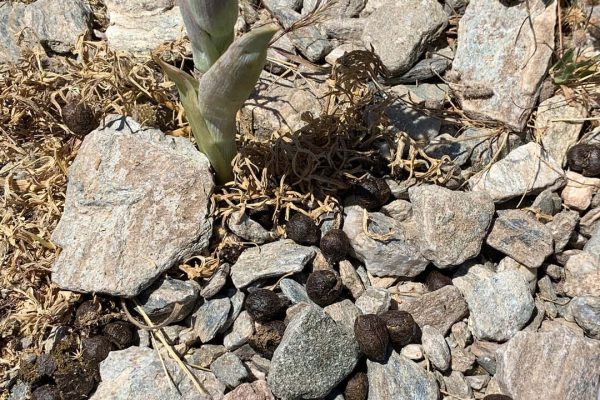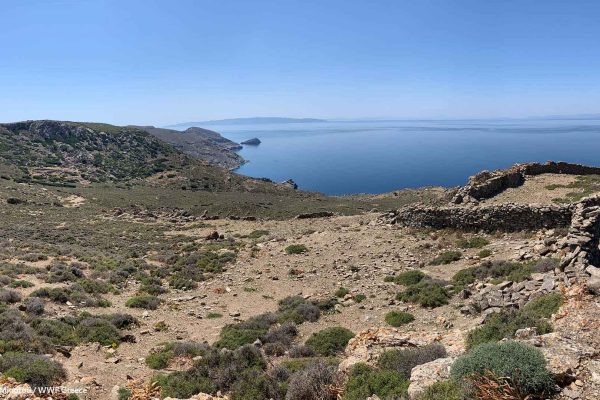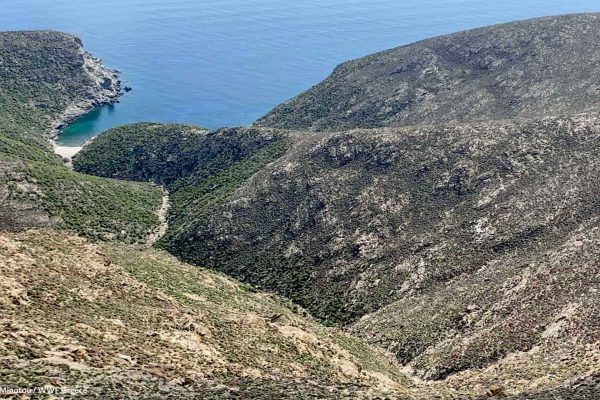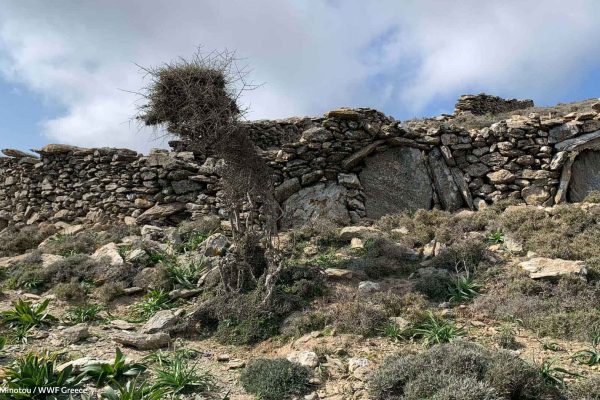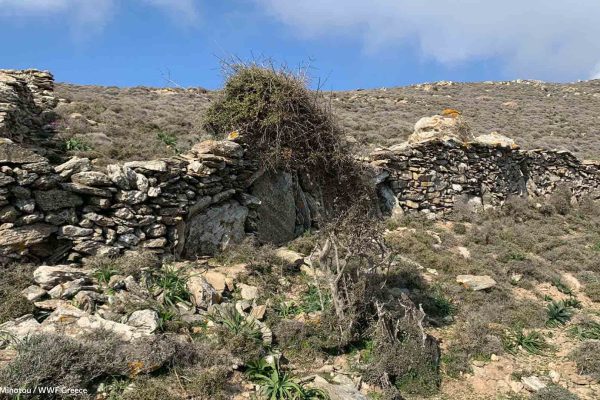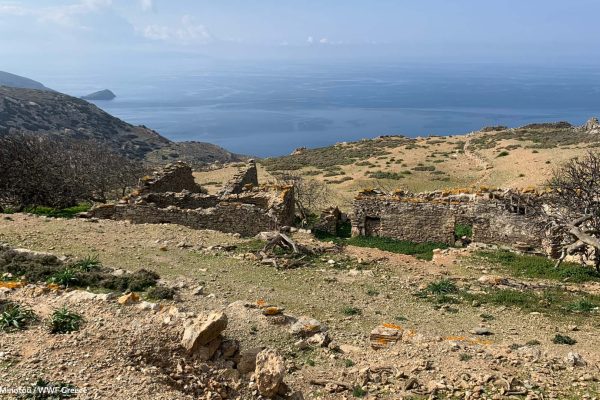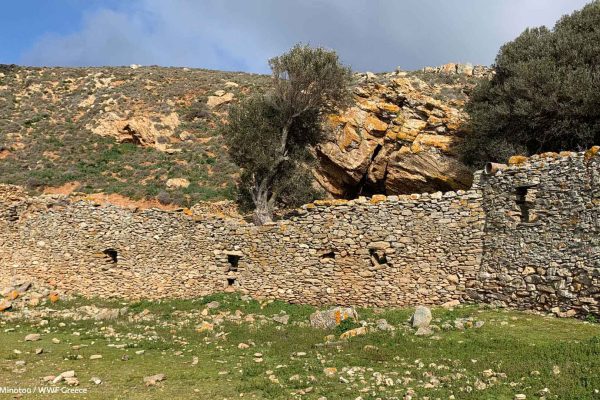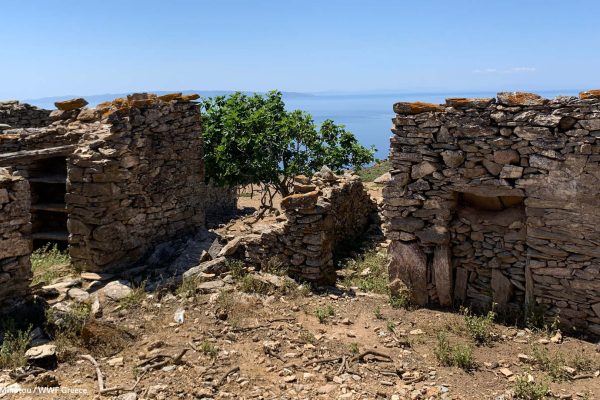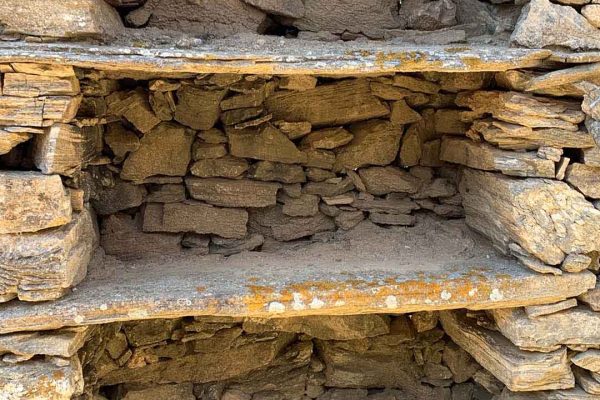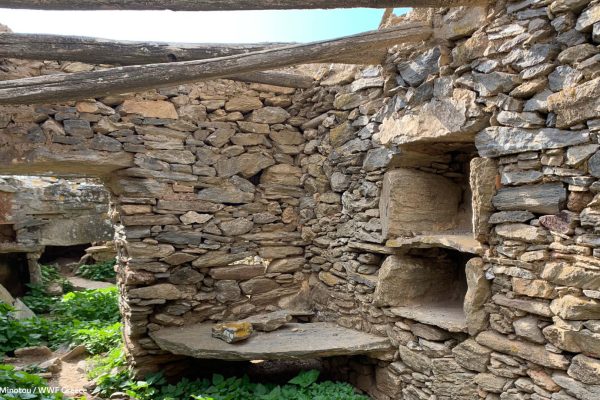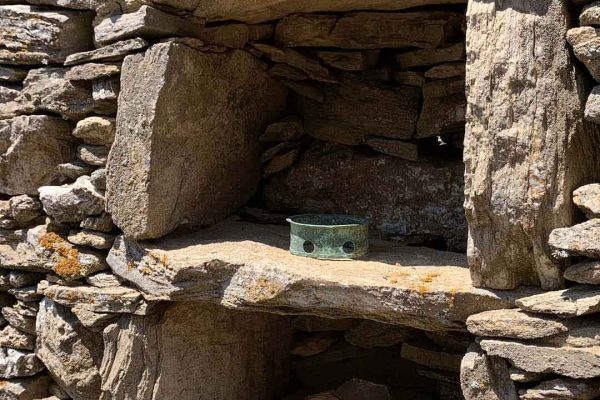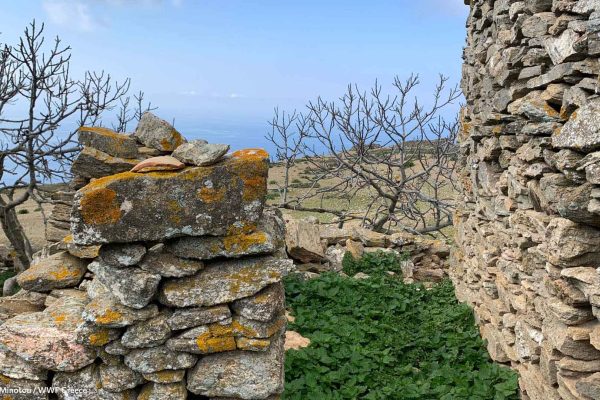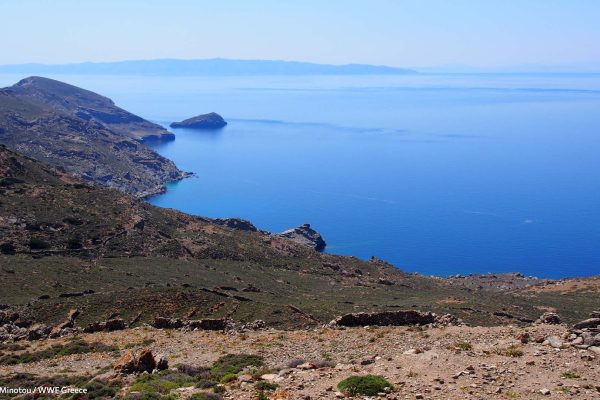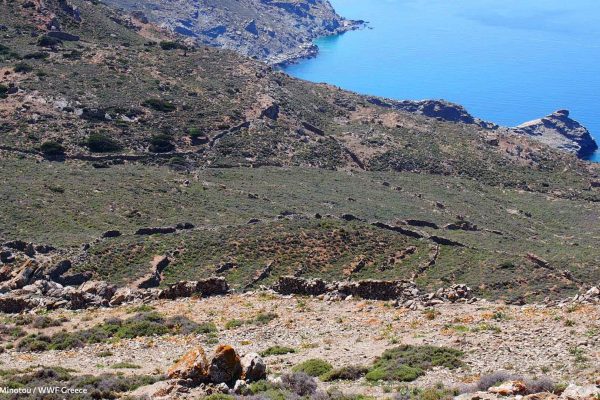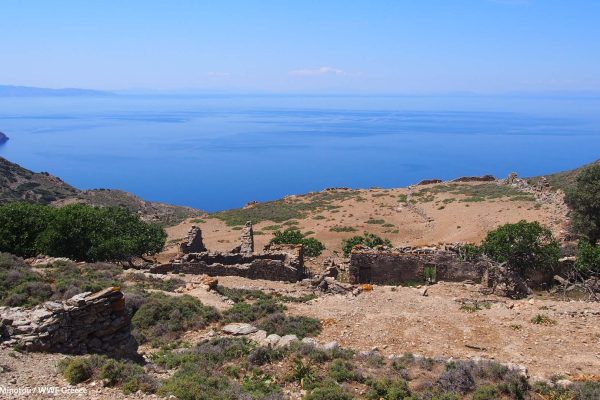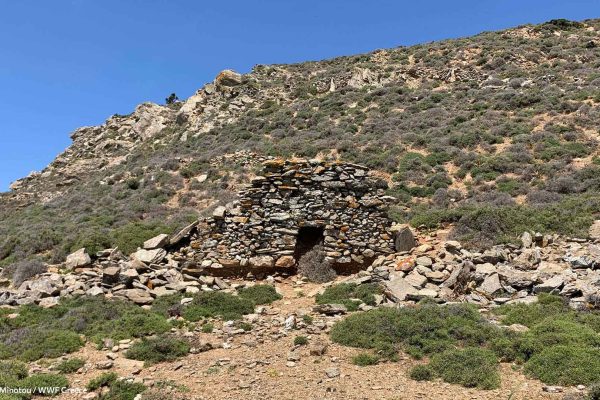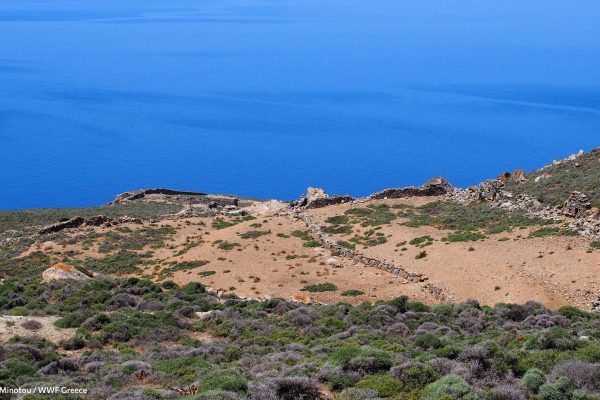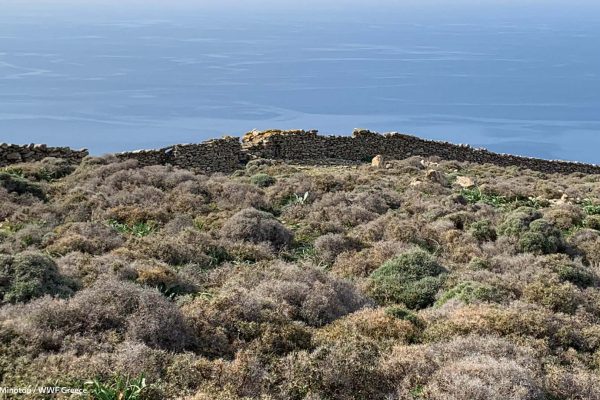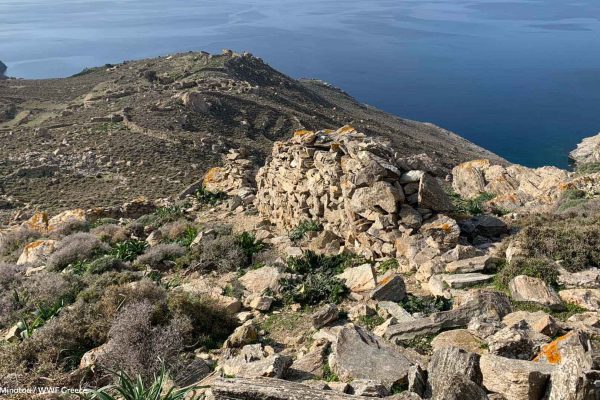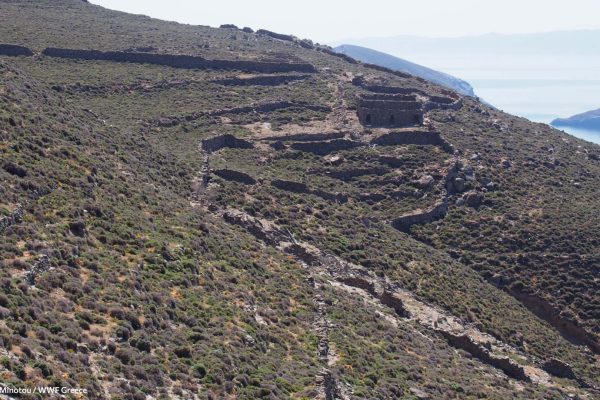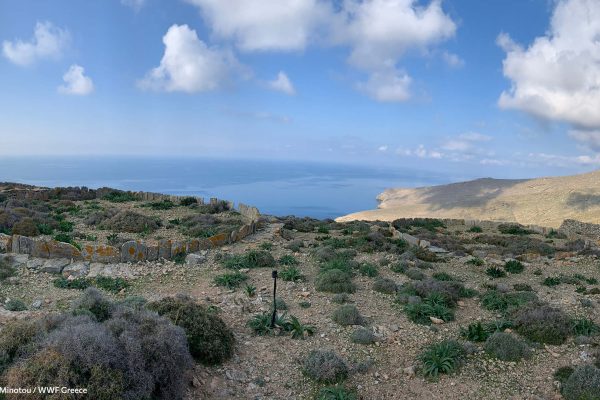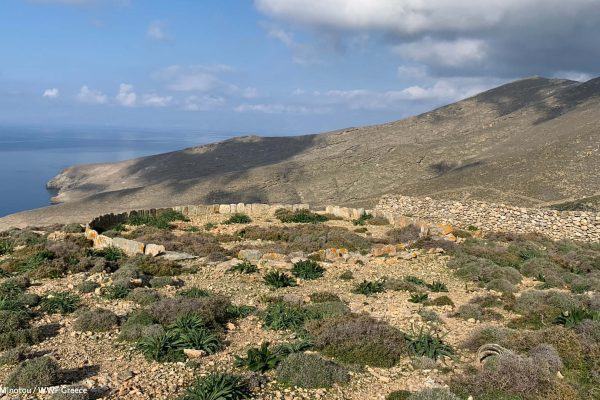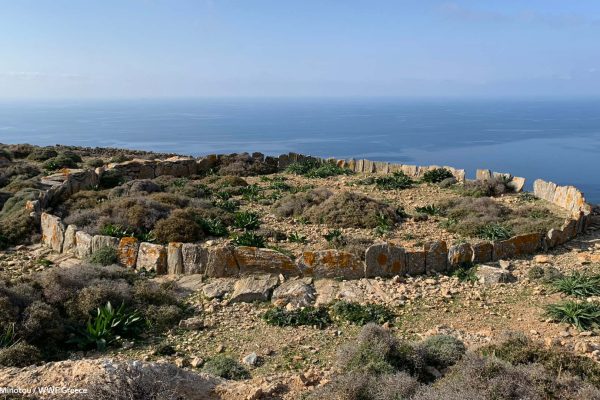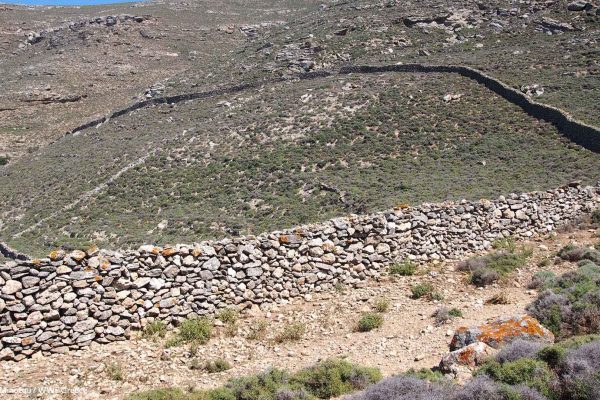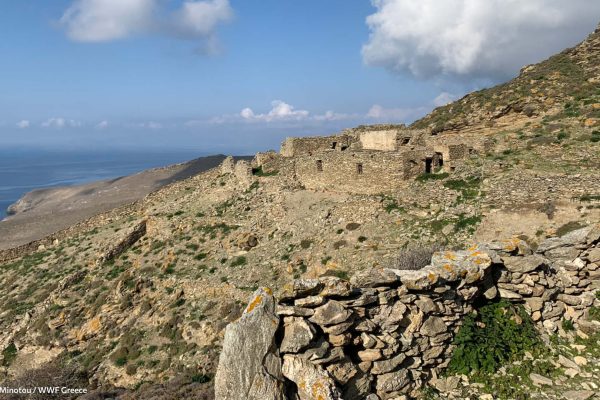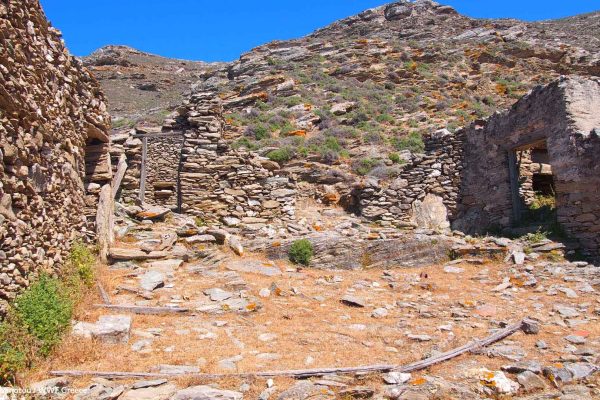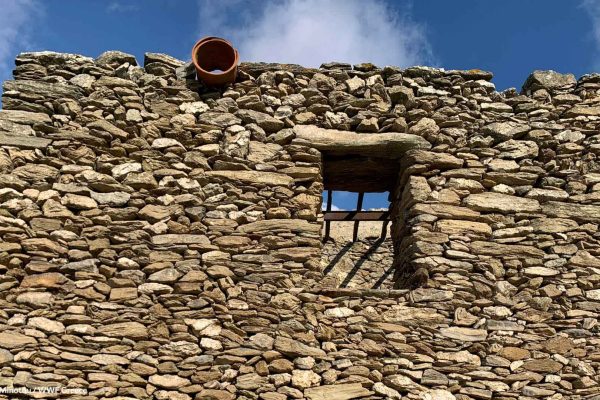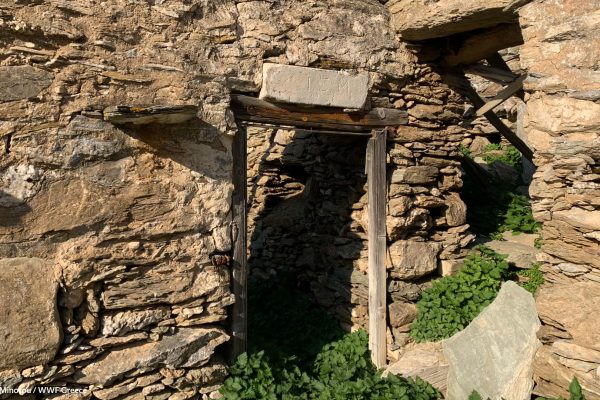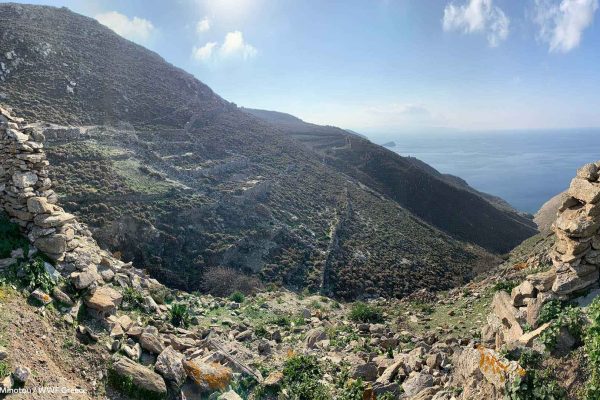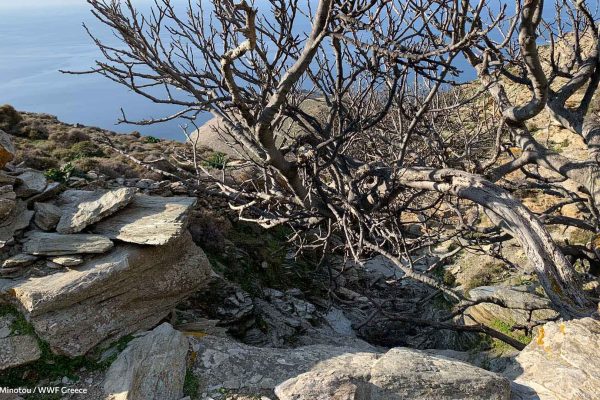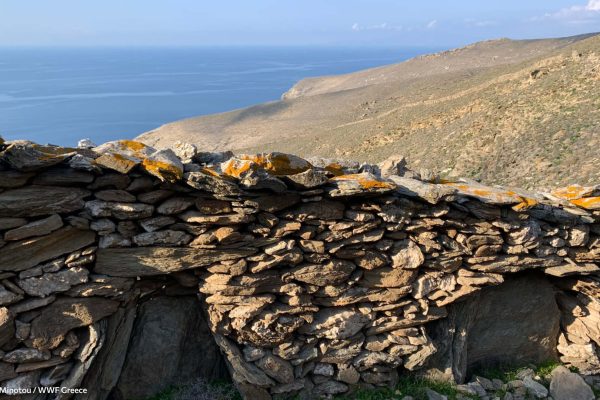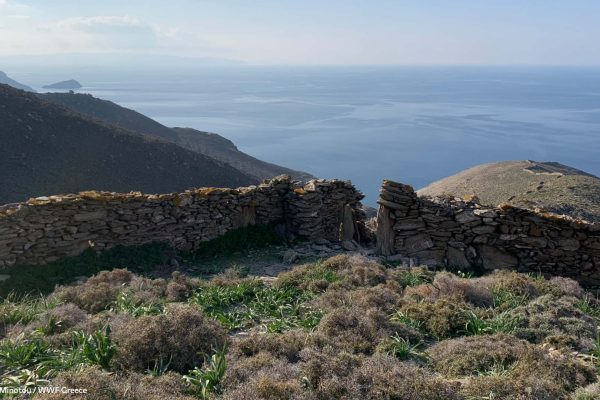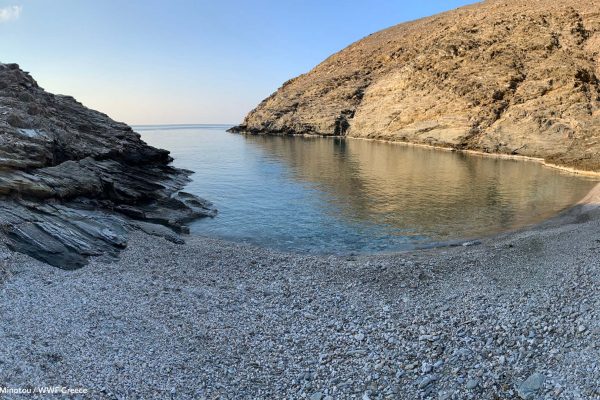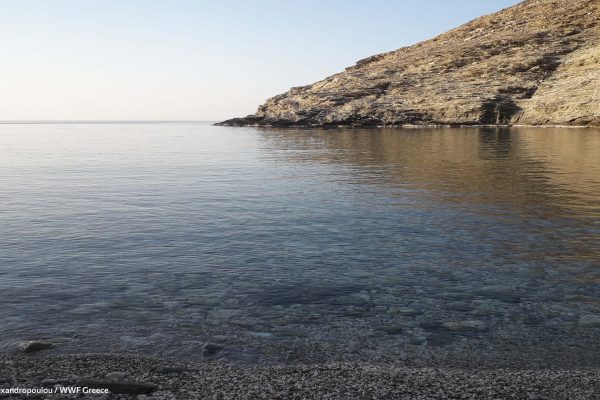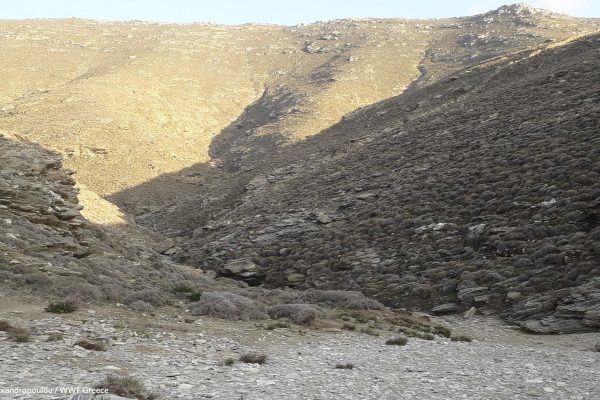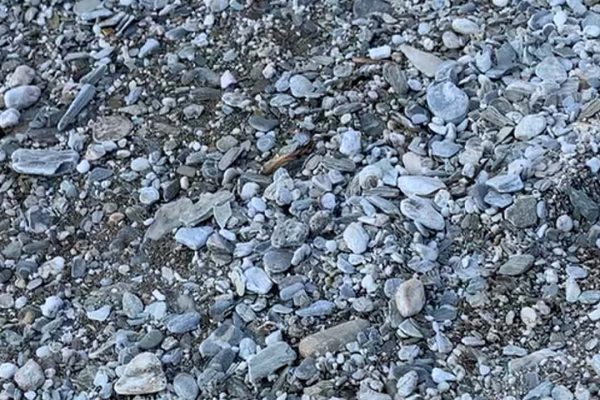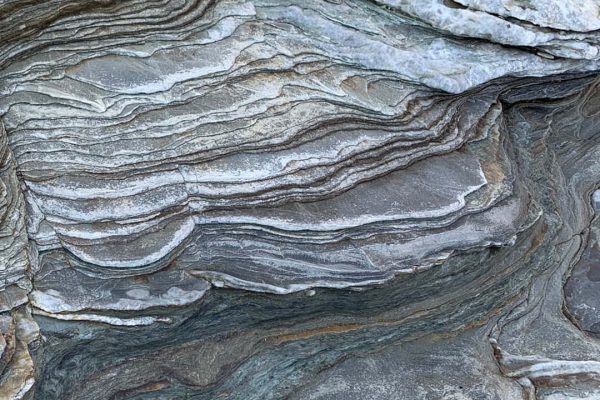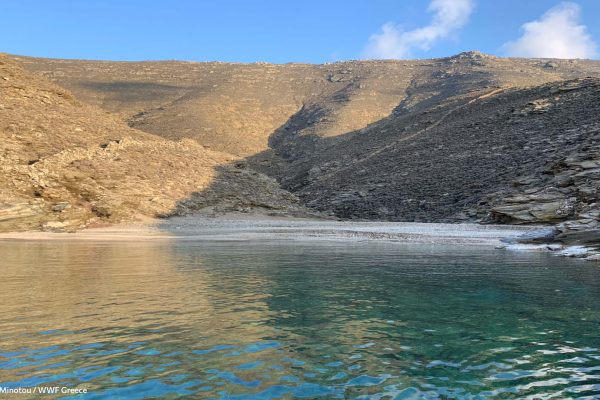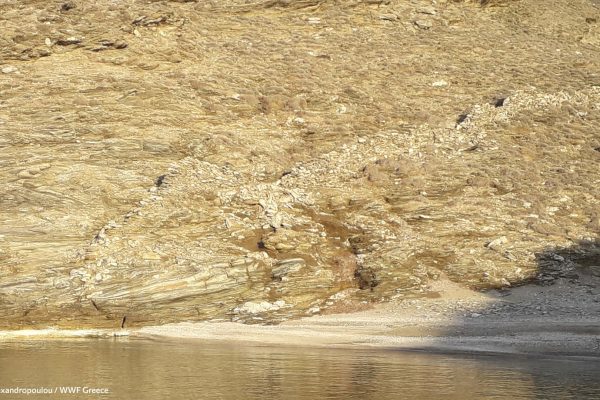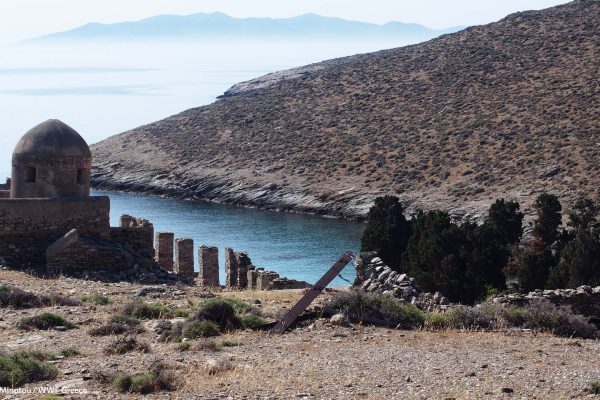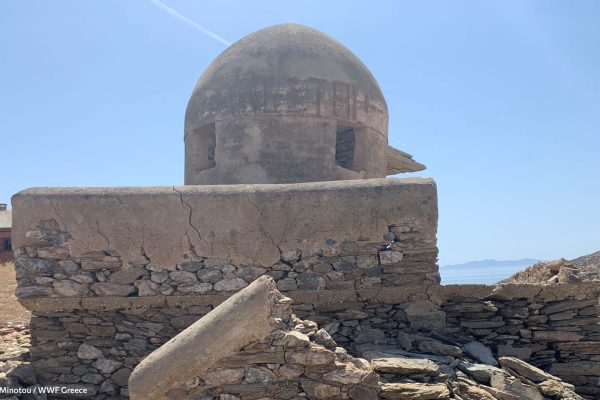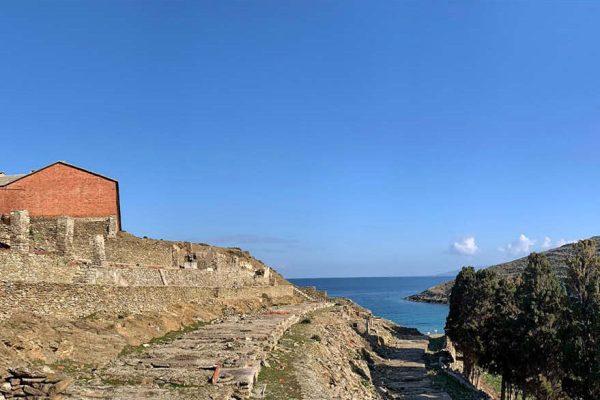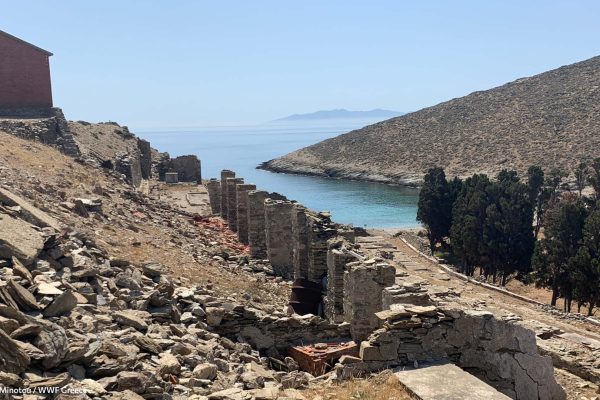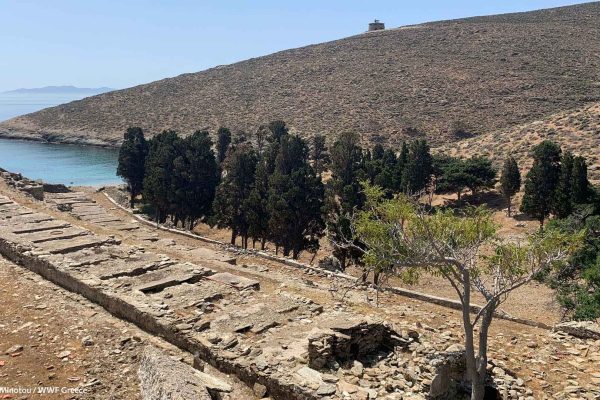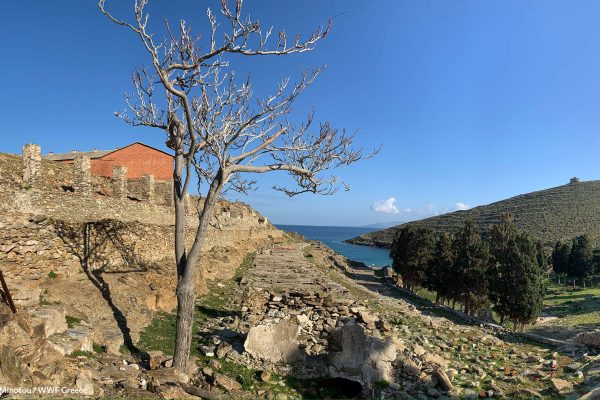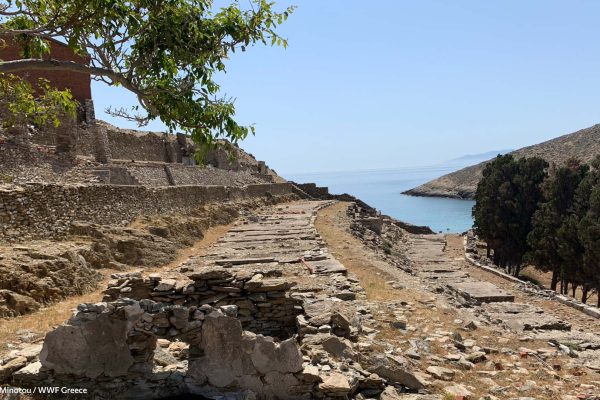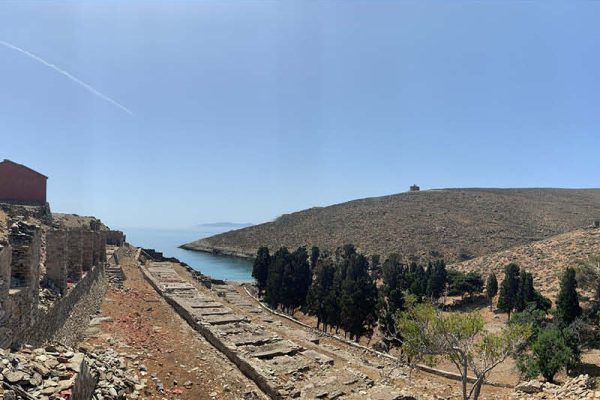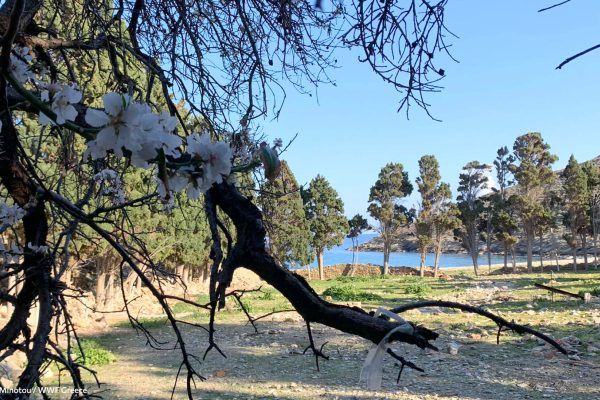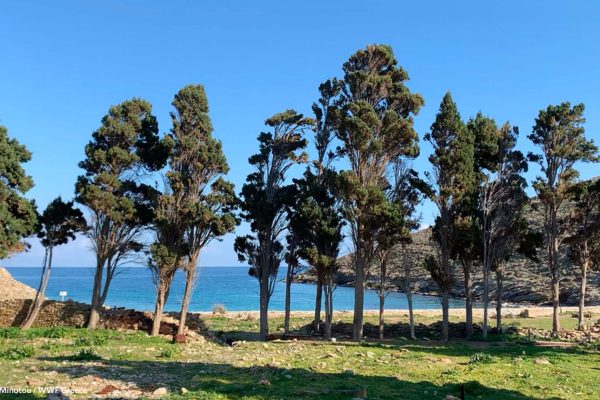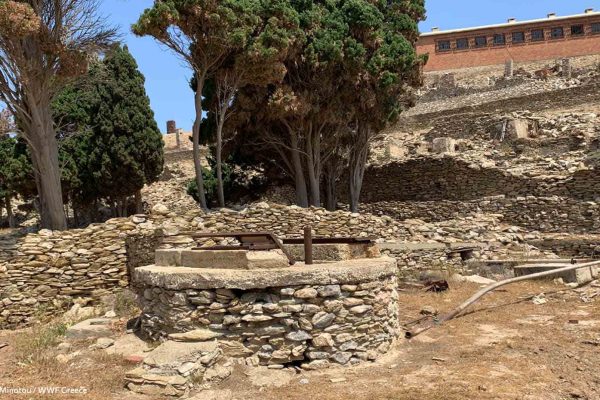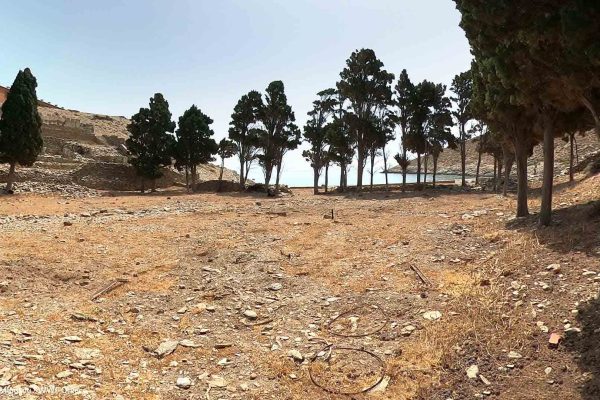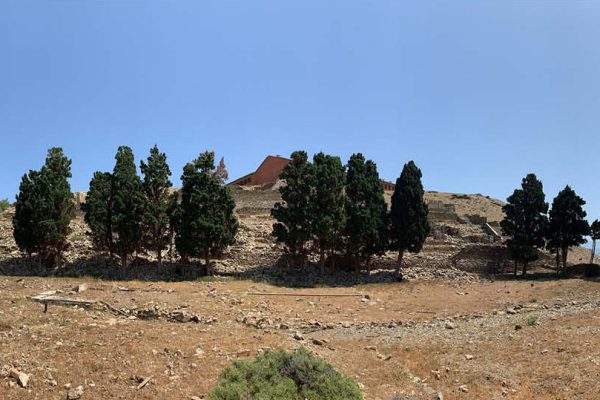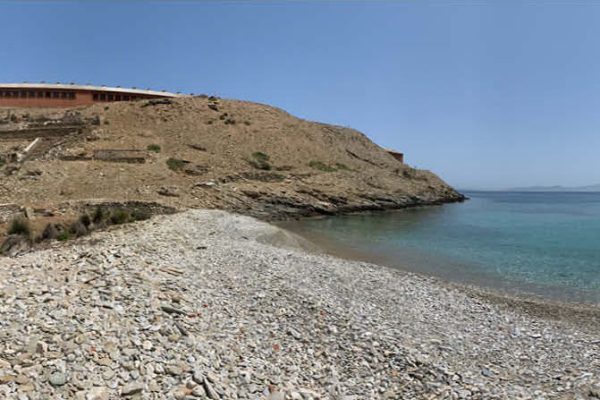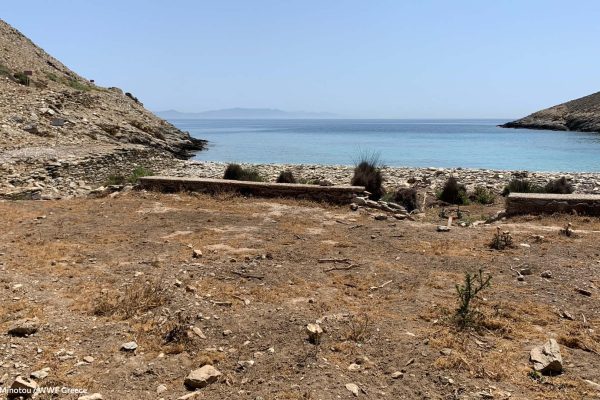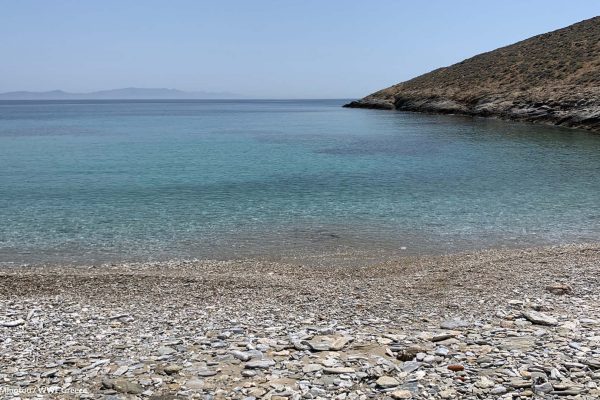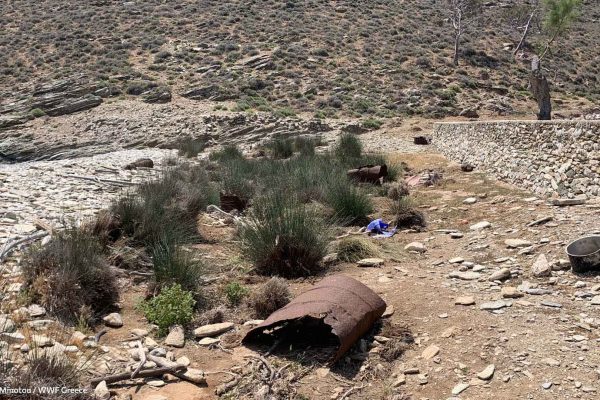... virtually ...
Gyaros / virtually
Gyaros has been a place of exile and imprisonment. Since 2001, the five bays on its eastern side have been designated as a historical site, and the buildings as preserved. Gyaros also served as a target practice range for the Hellenic Navy. It is the first Marine Protected Area in the Cyclades and also belongs to the European Natura 2000 Network. In the sea caves of Gyaros, 10% of the Mediterranean monk seal global population is found here. The combination of Gyaros’ historical and cultural heritage and its significant biodiversity and environmental value gives it a dual identity: an important site of historical collective memory and in parallel a natural areawith important species and habitats in need of protection and management.
The virtual tour of Gyaros was based on the creation of paths with stops at the island’s most significant points of interest with historical, social, and environmental significance. The map displays the stops with numerical numbering, and by selecting any of them, visitors can “travel” to that specific point or follow the entire route. Photographic material, videos, and audio files (soundscapes) have constituted the material for virtual representation. The combination of visual material and soundscapes (SS) accurately and comprehensively provides the depiction of each point. The photographic material follows the route’s flow to realistically convey the landscape. At each point, there is also a brief audio guide (AG).
Trails to Gyaros
1. Harbor pier
Arriving in Gyaros, the prison building imposes itself on the landscape. Its position and its impressive size making it visible from a distance, along with the rest of the buildings and ruins such as the hospital, the power station, the outposts, and the small auxiliary buildings that the visitor encounters upon reaching the pier, evoke emotions and memories of the place’s history. In contrast to the historical identity that signifies harsh historical periods, the environment with its azure waters and the Cycladic landscape provides a different perspective, and the tranquility of the soundscape encapsulates the present silence of this place spatially and temporally.
Harbor pier (AG)
Harbor pier Spring (SS)
2. Main gate of prisons
Following the uphill path, the visitor encounters the courtyard of the main gate of the prison. Looking towards the horizon, the sea delineates the isolation from the world. The bays to the east of Gyaros serve as a reference point for a place of imprisonment and exile, with the guarding outposts carrying a history of continuous control and supervision. The imposing red building of the prison, the rusted iron bars on the open windows, and the bars of the main gate evoke feelings of sadness. The prison is located at the center of the island, with the main gate imposing itself on the landscape, knowing that it led to physical hardship and spiritual stalemate deadlock.
Main gate of prisons (AG)
Main gate of prisons_2 Winter (SS)
Main gate of prisons Spring (SS)
Main gate of prisons_1 Winter (SS)
3. Secondary prison gate
The light that one encounters upon exiting the prison building nullifies time. Light holds a particular symbolism, as anything associated with imprisonment and exile often alludes to “darkness.” From the secondary gate of the prison, the hilly relief of Gyaros the surveillance guarding outposts, the water tanks, the newly erected monument in honor of those who lived there under confinement and died, the buildings of the neighboring bay, and the azure waters successively capture the gaze, evoking a variety of mixed of emotions.
Secondary prison gate (AG)
Secondary prison gate Winter (SS)
Secondary prison gate Spring (SS)
4. Water tanks and surveillance guard kiosk
Water was one of the most crucial natural resources on Gyaros, a top priority for survival on the island. The lack of clean water is documented in testimonies of both exiles and prisoners. Today, although rust has corroded the tanks, they still stand proudly on the slope, serving as a reminder of their role and significance. Their panoramic position overlooks the prisons, the bay with the hospital, and the ravine with its vegetation resisting stubbornly against the barren Cycladic landscape.
Water tanks (AG)
Water tanks Winter (SS)
Water tanks Spring (SS)
5. Dry-stone walls
Dry-stone walls, designated as an element of intangible cultural heritage by UNESCO, define properties, serve different land uses, function as terraces, and contribute to the preservation of biodiversity by hosting various species of insects, reptiles, and birdlife. The art of stone and the structure of constructions characterize the uniqueness of each place, following the terrain’s relief. The sparse and scrubby vegetation, combined with the imposing landscape that includes the five bays of the settlements, the Glaronisi, and the prison building, reflect the memories and history of Gyaros.
Dry-stone walls (AG)
Dry-stone walls Winter (SS)
Dry-stone walls Spring (SS)
6. Biodiversity Spot
The terrestrial part of the island hosts numerous bird species, reptiles, with the well-known harmless black snake, insects, and mammals. Indicative signs of biodiversity include nests, snake skins, and droppings from free-roaming goats. Through the different soundscapes of each season, the dynamics of nature are captured. Various plant species also serve as biodiversity indicators, with notable references to fritillaria and orchids.
Biodiversity Spot (AG)
Biodiversity Spot Spring (SS)
7. Natural Spring
Ascending towards the mountain ridge, the natural spring of water also serves as a viewpoint. The landscape with the slopes of Gyaros and the small beaches below that change colors depending on the season and when the plants bloom, the dry-stone walls, and the distinctive soundscape convey a different image of Gyaros.
Natural spring (AG)
Natural spring Winter (SS)
Natural spring Spring (SS)
8. Old Settlement I
Heading towards the northwest, the ruins of the old settlement with its stone houses, the cluster of olive trees, the large fig tree, the slopes of Gyaros bordered by dry stone walls, and the small island of Foues, which hosts a significant colony of Eleonora’s falcons, welcome us to another period in the history of the island. This history is connected to the four families that lived there, engaging in livestock breeding, cultivation of crops, beekeeping and fishing before Gyaros was suddenly transformed into a place of exile and imprisonment.
Old Settlement Ι (AG)
Old Settlement Ι Winter (SS)
Dry-stone Walls – View Point (AG)
Dry-stone Walls – View Point Spring (SS)
10. Τreshing floor
The ruins of grain storage warehouses with background the islet of Foues, the elaborate dry-stone walls on the slopes, and the stone threshing floors used for threshing grains are landmarks of Gyaros’ northwest identity. The small rabbits timidly emerging from the dry-stone walls, along with the goats that noisely move away from human presence, and the various bird species flying in the wider area indicate the biodiversity of the region. Many plant species have been recorded by expert botanists in this area of the island.
Τreshing floor (AG)
Τreshing floor Winter (SS)
Τreshing floor Spring (SS)
11. Old settlement II
The cluster of stone houses in the old settlement with the stone household items and the engraved inscriptions serves as a reminder that in the past Gyaros had inhabitants engaged in agricultural and livestock activities. The location of the settlement is commanding but hidden in the relief of the landscape, offering breathtaking views either towards the islet of Foues or towards the slopes with scattered dry-stone constructions and the open horizon. The preserved wooden bases of the roofs are also impressive.
Old settlement II (AG)
Old settlement ΙΙ Winter (SS)
12. Beach NW
Following the dry stone wall with its impressive construction technique, the path leads down to the back beach located on the northwest side of the island, where they had the fishing boats but also approached the boats of the neighboring islands. The geological formations on the cliffs, combined with the lush green waters, capture attention. The barren Cycladic landscape with its hills and streams bids farewell to the visitors as they move away by sea.
Beach NW (AG)
Beach NW Spring (SS)
13. Ancient Prison Camp
Behind the prison building at the end of the secondary gate’s courtyard, the guarding outpost dominates. The stone staircase next to it leads to one of the old camps where the tiny stone-build bases of the tents and the ruins of a church can be discerned. According to testimonies, the living conditions were harsh, and the space was limited. On the opposite side, the ruins of a small auxiliary building that served the prisoners’ agricultural work remind us of a part of daily life in Gyaros.
Ancient Prison Camp (AG)
Ancient Prison Camp Winter (SS)
Ancient Prison Camp Spring (SS)
14. The Prison’s small grove
Under the old camp, the small grove with cypresses delineates the coastal area. Well disciplined and in straight lines, it surrounds the rear bay of the prisons. The old stone well highlights the interaction with the existing stream. A blooming almond tree defiantly indicates that Spring season is here – as the Spring of freedom that was not attainable. The chirping of cicadas in the summer becomes the companion of visitors.
Prison’s small grove (AG)
Prison’s small grove Winter (SS)
Prison’s small grove Spring (SS)
15. Beach of the 5th bay
The small wetland area with its characteristic plants above the pebble beach separates the small grove from the coastal zone. The 5th bay is enclosed by the prison building and the old camp and in the northwest by the hilly relief with the guard outpost. The cries of seagulls, combined with the constant movement of the sea, give a unique dynamic to the soundscape.
Beach of the 5th bay (AG)
Beach of the 5th bay Winter (SS)
Beach of the 5th bay Spring (SS)
CREDITS ‘VIRTUALLY’ – ‘LIBRARY’
Material Design, Texts, Narratives, Text Translations: Charikleia Minotou
Audio Recordings and Audiovisual Material: Fanis Maragos
Editing and Processing of Visual Material, Graphics: Pavlina Alexandropoulou
Data Collection and Processing: Charikleia Minotou, Aristotelis Philippos Skiadaresis
Narrations: Charikleia Minotou, John Nikoloudakis Minotos, Cjay Tshimanga
Photos and Videos: Charikleia Minotou, Fanis Maragos, Aristotelis Philippos Skiadaresis, Pavlina Alexandropoulou, Apostolis Zamplakos, Giorgos Katsadorakis, Christos Papadas, Giorgos Rigoutsos
Special Thanks to the WWF Greece Team: Amalia Alberini, Vicky Denaxa, Anneza Georgopoulou, Apostolis Zamplakos, Natalia Kalevra, Spyros Kotomatas, Ventouris Mpountouris, Giannis Prevedouros, for their contribution to the implementation of the entire project.

